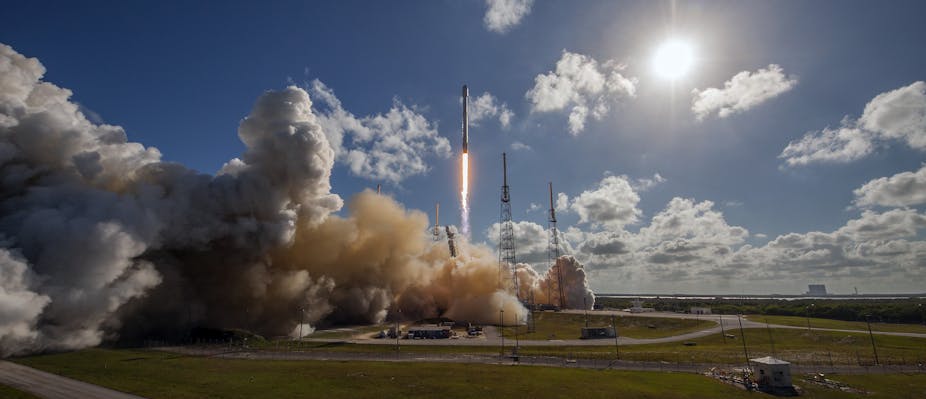From inflatable space stations to space sweeteners, it’s been an amazing week in space but none so visually astounding as the video from SpaceX of their 3rd successful landing at sea.
Three perfect landings
This landing demonstrates that SpaceX’s previous successes were no flukes. While there may well be failures ahead the first stage of reusing a rocket (safely landing it) is in hand. Now they have to refurbish and relaunch one of the three rockets in the SpaceX hanger. This last step is however likely the biggest challenge as even NASA failed to make this cost effective with the Space Shuttle due to the demands of space flight on the spacecraft and boosters. Often the example given is that aircraft aren’t scrapped when they land at the airport but instead refuelled and reused, if SpaceX can do this then it will usher in an incredible new era of cheaper access to space.
Inflatable space hotel?
As well as getting excited about SpaceX, I was also fortunate to feature another private space company success on ABC Breakfast News with the awesome Bigelow Expandable Activity Module or BEAM. This is an inflatable space room attached to the International Space Station which was successfully inflated by astronaut Jeff Williams over the course of 7 hours, carefully letting air from the space station into the habitat.
Apparently BEAM made popping-sounds each time air was let in from the station which personally I would have found alarming but was entirely expected by NASA. Unfortunately an earlier inflation attempt on Thursday failed so NASA will delay installing sensors into BEAM for a week to assess it for leaks.
For the next two years BEAM will be assessed for both radiation protection as well as resisting damage from micro-meteoroid / space junk. Assuming it goes well then we can hope for even large inflatables to be launched into orbit, as they will be smaller and lighter to launch than traditional metal enclosures. These will pave the way for potential commercial space laboratories and even space hotels.
Space sweeteners
There was also the long awaited confirmation from the European Space Agency’s Rosetta spacecraft that the Comet 67P contains not just organic molecules but an entire amino acid, which are the building blocks of proteins for life on earth.
The amino acid in question, glycine, is also used as an artificial sweetener on Earth and was found in the debris around the comet when Rosetta undertook close flyby’s from 2014 - 2015. In addition it also found as well as the all important element Phosphorous which, as gardeners know, is key to making life in the garden flourish.
This result confirms the theory that comets can potentially bring the ingredients for life to Earth. As comets are frozen fossils from the earliest moments of our Solar System they also allow us to see that these ingredients for life, including the all important water they contain, are present from the start. It also means these materials are likely found throughout the clouds of gas that one day become star systems, once again supporting the idea that the conditions for life are far more common than (I at least) could have hoped.
Mars at closest approach for a decade
On May 30th, Mars will reach its closest point to Earth in over a decade, a mere 75 million km away. Since it’s closer it will appear brighter and (with a telescope) bigger on the sky. As it has also only just passed Opposition it will still appear opposite the Sun in the sky, so as the Sun sets in the West you will see the red planet rise in the East. Followed by the golden colour of Saturn below for the keen-eyed amongst you.
So a good way to relax after such an exciting week in space is to take a few minutes to look for Mars rising in the East.

